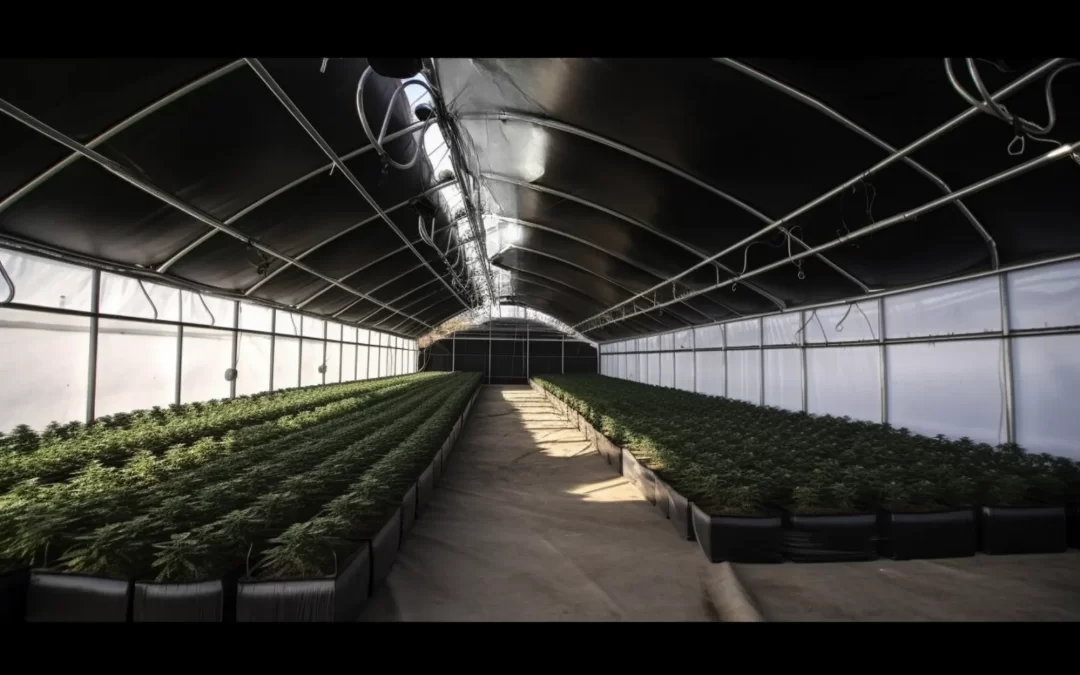How to Build a Light Deprivation Greenhouse: A Complete Guide
When it comes to growing cannabis, having a light deprivation greenhouse can give you the upper hand in terms of yields and quality. This type of greenhouse is designed to manipulate the hours of light and darkness that your cannabis plants receive. With complete control over the lighting schedule, you can induce flowering in your plants earlier than outdoor growers, which can lead to earlier and more productive harvests.
In this guide, we’ll cover everything you need to know about building a light deprivation greenhouse, from the benefits to the materials needed and the steps for setting it up. We’ll also give you some tips and tricks to avoid common mistakes and make the most out of this cannabis technology.
What is Light Deprivation?
Light deprivation, also known as light deprivation greenhouse growing, is a cultivation technique used by indoor growers to control the photoperiod of cannabis plants. This process involves manipulating the hours of light and darkness that cannabis plants receive, which can lead to earlier and more productive harvests.
There are several ways to control the light cycles of cannabis plants in a light deprivation greenhouse. One method is by using curtains or shades to cover the plants and block out the light. Growers can use blackout curtains or shades to create a completely dark environment, or they can use light deprivation curtains that allow some light to pass through while still maintaining the desired photoperiod.
Another method of controlling the light cycles is by using specialized light deprivation greenhouse structures. These structures typically feature blackout material that is specifically designed to block out all light, allowing growers to create a completely dark environment. Additionally, some light deprivation greenhouses use supplemental lighting to provide the necessary amount of light during the vegetative or flowering stage.
Regardless of the method used, controlling the light cycles of cannabis plants is an essential aspect of light deprivation greenhouse growing. By manipulating the hours of light and darkness, growers can induce vegetative growth or flowering at specific times, leading to higher yields and more productive harvests.
Why Build a Light Deprivation Greenhouse?
For indoor growers, a light deprivation greenhouse is a great way to utilize solar energy while still maintaining complete control over the environment. This is especially important for cannabis growers who need to maintain specific humidity levels, internal temperatures, and lighting schedules to maximize their yields and quality. Plus, building a greenhouse structure allows for a more productive greenhouse that can accommodate a variety of sizes of cannabis plants.
Benefits of Light Deprivation Greenhouses
There are numerous benefits to using a light deprivation greenhouse. For one, you can control the light cycle and induce flowering earlier than outdoor growers. This can lead to earlier and more productive harvests, allowing you to get your product to market faster. Additionally, greenhouse growers can use internal environment controls to create the ideal growing conditions for their plants, from temperature to humidity to lighting. Furthermore, using a light deprivation greenhouse can help reduce energy consumption and production costs.
Photoperiodism
Photoperiodism refers to the way that plants respond to light cycles. Cannabis plants require a certain number of hours of darkness each day to induce flowering, which is why controlling the light cycle in a light deprivation greenhouse is so important.
Three Tiers of Greenhouses: Find the Right Option for Your Budget
There are three tiers of greenhouses that you can choose from: hoop houses, home kits or full-sized commercial grow houses, and custom-engineered greenhouses. Each option has its own advantages and disadvantages.
Hoop Houses
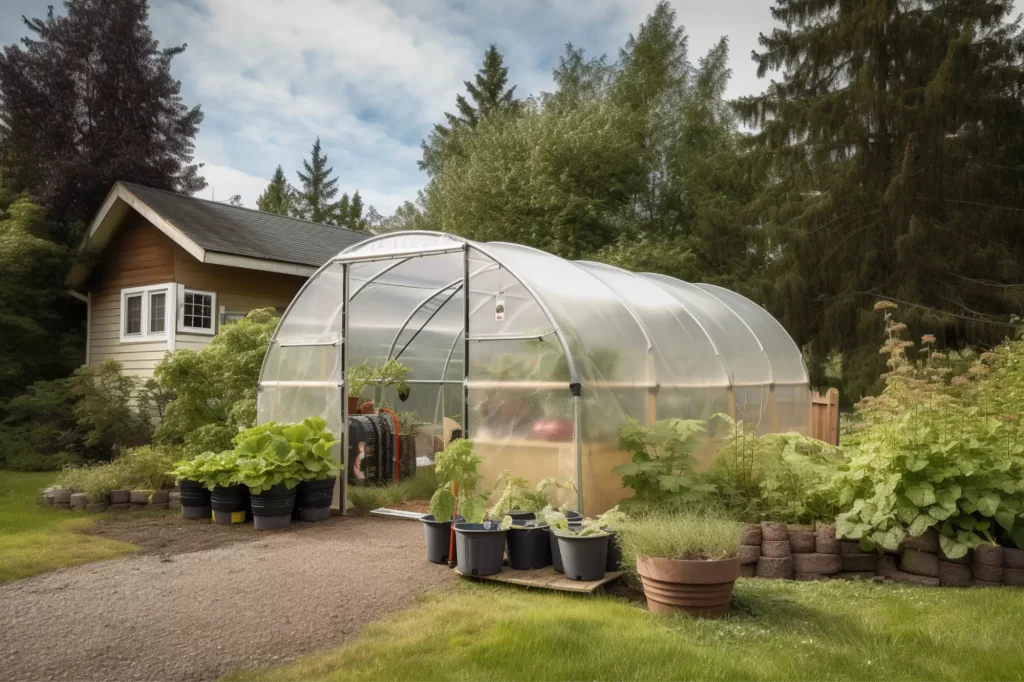
Hoop houses are the most affordable option and are easy to assemble. They are typically made of PVC or metal hoops covered with a polyethylene film. Hoop houses are great for small-scale operations and can be easily moved or expanded. However, they are not as sturdy as other types of greenhouses and may not provide enough insulation for colder climates.
Advantages: Affordable, easy to assemble, can be easily moved or expanded.
Disadvantages: Not as sturdy, may not provide enough insulation for colder climates.
Home Kits or Full-Sized Commercial Grow Houses
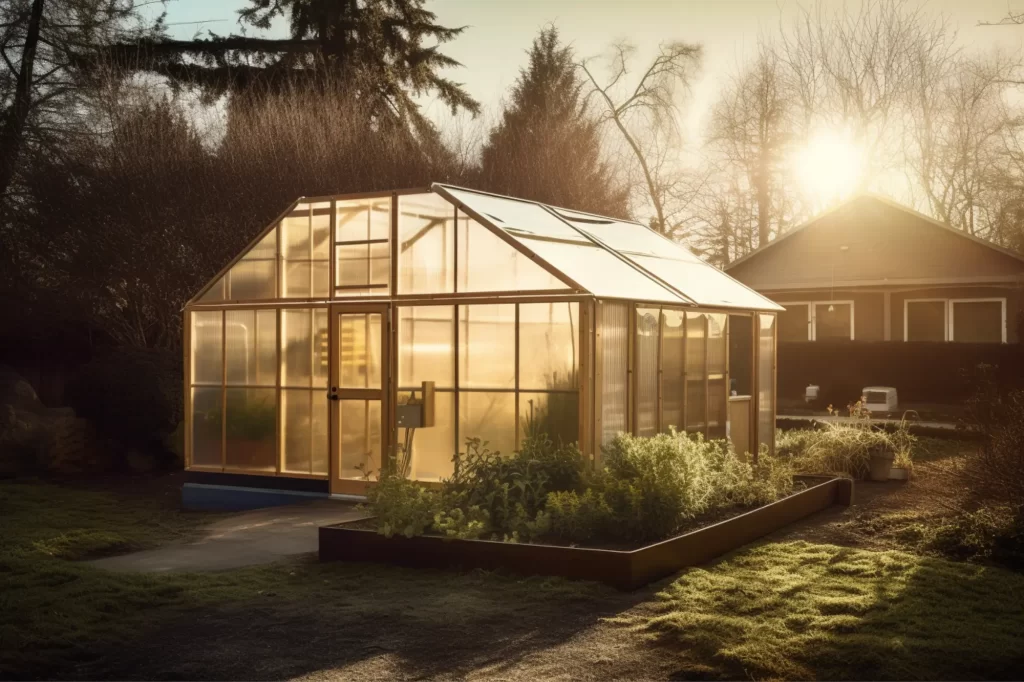
Home kits or full-sized commercial grow houses are larger than hoop houses and can accommodate more plants. They are often made of metal frames and covered with polycarbonate panels or glass. These types of greenhouses offer more insulation and can be customized to include environmental controls such as heating and cooling systems, ventilation, and shading. They are a great option for medium to large-scale operations. However, they can be more expensive and require more maintenance.
Advantages: Larger, offer more insulation, can be customized with environmental controls.
Disadvantages: More expensive, and require more maintenance.
Custom-Engineered Greenhouses
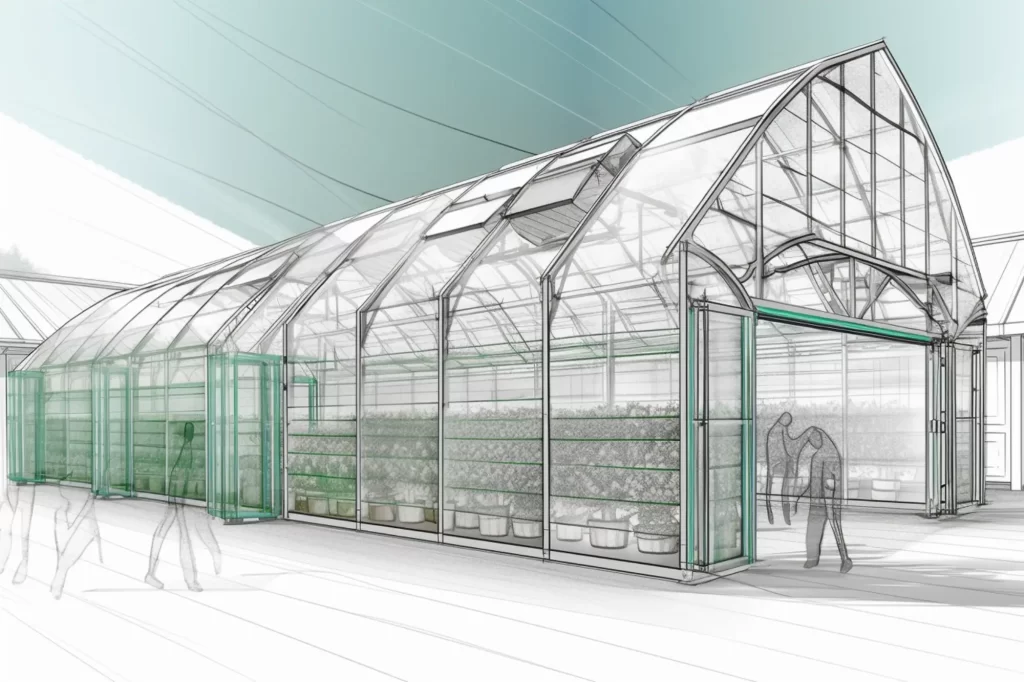
Custom-engineered greenhouses are the most expensive option, but they offer the most flexibility in terms of design and features. These types of greenhouses are tailored to meet the specific needs of the grower and can include advanced features such as aquaponics, supplemental lighting, and energy-efficient systems. They are a great option for large-scale operations and growers who want complete control over the environment. However, they require a significant investment and may require specialized knowledge to maintain.
Advantages: Flexible design, advanced features, complete control over the environment.
Disadvantages: Most expensive option, may require specialized knowledge to maintain.
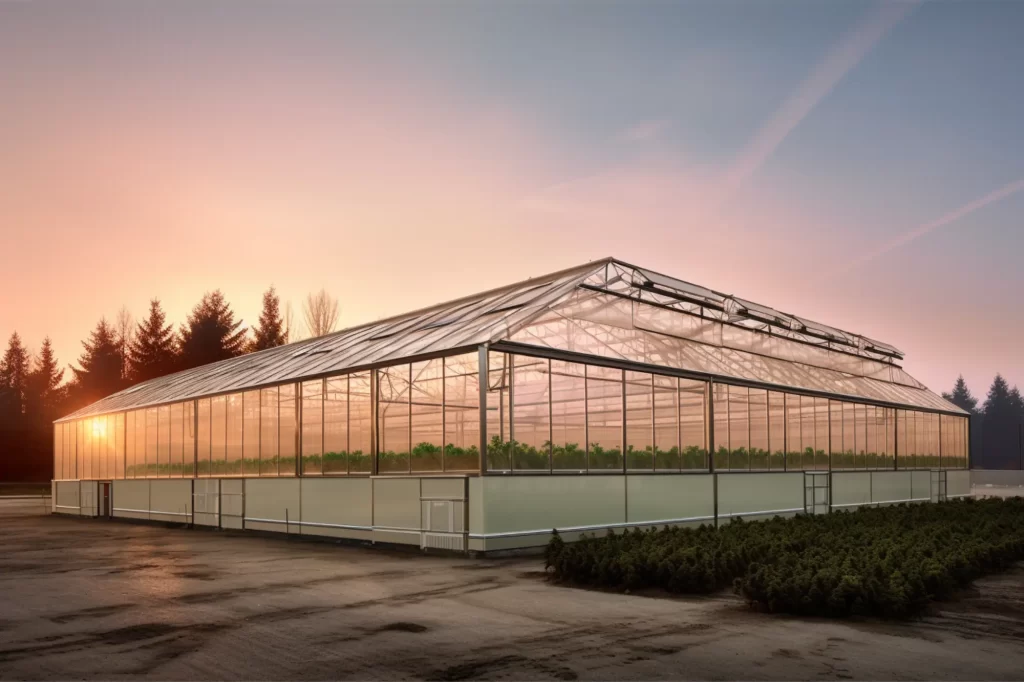
Light Deprivation Greenhouse Materials Needed
To build a light deprivation greenhouse, you’ll need a few key materials. The type of blackout material you choose will depend on your budget and the level of darkness you want to achieve. Here are some options:
Simple Plastic Film or Black Tarp
These are the most affordable options and work well for growers on a tight budget. However, they may not provide complete darkness, which can affect the flowering of your plants.
Blackout Reflective Tarp
This type of material is more expensive than simple plastic film or black tarp, but it provides complete darkness and reflects light back onto your plants, which can increase their growth.
Layered, Reflective Blackout Fabric
This is the most expensive option, but it provides complete darkness, reflects light back onto your plants, and helps to insulate your greenhouse, which can save on energy costs.
Step-by-Step Guide to Building a Light Deprivation Greenhouse
Building a light deprivation greenhouse requires careful planning and execution. Here is a step-by-step guide to building a light deprivation greenhouse that will yield the best results.
Setting up the Frame and Foundation
The first step in building a light deprivation greenhouse is setting up the frame and foundation. The frame should be sturdy enough to support the weight of the greenhouse cover and any environmental control systems that you plan to install. The foundation should be level to ensure stability and prevent water from pooling.
Installing the Light Deprivation System
The next step is installing the light deprivation system. The type of blackout material you choose will depend on your budget and the level of darkness you want to achieve. Common materials used include simple plastic film or black tarp, blackout reflective tarp, and layered, reflective blackout fabric. Be sure to properly seal any seams or gaps to prevent light leaks.
Adding Ventilation and Temperature Control
Proper ventilation and temperature control are essential to maintaining a healthy growing environment in your light deprivation greenhouse. Install greenhouse heaters, evaporative coolers, automatic greenhouse vents, and other temperature control measures to maintain ideal growing conditions. Proper ventilation is essential to maintaining healthy plant growth and preventing mold and other issues.
Irrigation and Fertilization
Setting up an irrigation system and adding fertilizers to the soil or hydroponic solution is the next step in building a light deprivation greenhouse. The type of irrigation system you choose will depend on your growing medium and the size of your operation. Be sure to monitor pH levels and nutrient levels to ensure optimal growth.
Choosing the Right Strains for Light Deprivation
Choosing the right strains for light deprivation is important for achieving optimal yields in your greenhouse. Indica and hybrid strains tend to do well in light deprivation greenhouses, but be sure to choose strains that are suited to your specific growing conditions. Choose strains that respond well to light deprivation and have short life cycles.
Harvesting and Curing Cannabis Grown in a Light Deprivation Greenhouse
Harvesting and curing your cannabis plants properly is essential to maximizing quality and flavor. Harvest your cannabis plants and cure them properly to remove excess moisture and bring out the full flavor of your cannabis.
Some Tips To Note
To get the most out of your light deprivation greenhouse, it’s important to keep a few things in mind:
Scheduling Is Key
Stick to a consistent light cycle and schedule to ensure optimal growth and flowering. Be sure to monitor the hours of light and darkness to induce flowering at the right time.
Get Ready To Work: Covering and Uncovering Your Greenhouse
Covering and uncovering your greenhouse can be time-consuming and require physical labor. Be prepared to put in the work to reap the rewards.
Patience Is a Necessity
Growing cannabis takes time and requires patience to ensure the best results. Don’t rush the process, and be prepared to wait for the optimal harvest time.
Knowledge About Growing Seasons Is Crucial
Understanding the growing seasons and the needs of your plants is key to maximizing your yields. Be sure to research the optimal growing conditions for your specific strains.
No Shortcuts: Ensure A Completely Dark Environment
Make sure that your blackout material provides complete darkness to avoid disrupting the light cycle of your plants. Any leaks of light can disrupt the flowering process and lead to lower yields.
Making Temperature Control Your Priority at Night
Making temperature control your priority at night is important to maintain healthy growth, particularly during the winter months. Be sure to monitor your greenhouse’s internal temperature and use heaters or evaporative coolers as needed to maintain optimal temperature.
Common Mistakes to Avoid When Building a Light Deprivation Greenhouse
When building a light deprivation greenhouse, there are a few common mistakes to avoid:
- Not choosing the right strains for light deprivation can lead to lower yields and poor quality.
- Using blackout materials that are not completely light-tight can disrupt the flowering process.
- Neglecting temperature and humidity control can lead to mold, pests, and other issues.
- Not using quality environmental control systems can lead to inconsistent growing conditions and lower yields.
Use This Cannabis Technology to Your Yield Advantage
A light deprivation greenhouse can significantly increase your yields and quality, so make the most of this cannabis technology. By following best practices and choosing the right materials, you can maximize the benefits of a light deprivation greenhouse for your cannabis growing operation.
In conclusion, building a light deprivation greenhouse can provide numerous benefits for cannabis growers, from earlier and more productive harvests to complete control over the environment. By choosing the right materials and greenhouse type, following a step-by-step guide, and keeping these tips in mind, you can take your cannabis growing operation to the next level.

